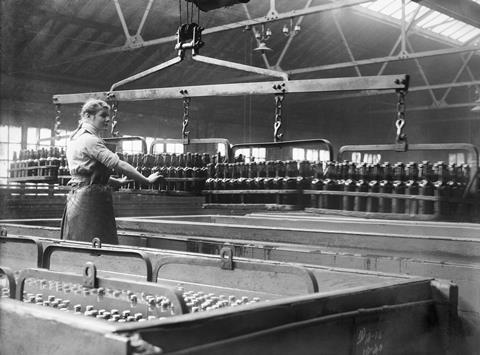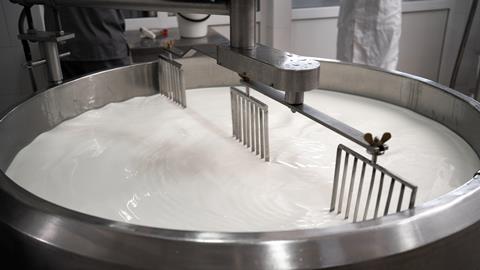Pasteurisation is a process by which raw milk is heated to a specific temperature for long enough to kill any pathogenic bacteria, including those that can cause food-borne illnesses. In the current day, all the milk in supermarkets will have gone through a rigorous pasteurisation process before reaching our store shelves. However, this hasn’t always been the case.
History of milk drinking and pasteurisation
Around 10,000 years ago in Eastern Europe, some farmers – due to their proximity to domesticated farm animals like cows – began drinking milk. However, at this time, due to lactose intolerance, only a few people were able to drink it without becoming incredibly ill. Then, between 5000 and 4000 BC, herders and farmers began to gain lactase persistence, a genetic mutation causing the continual production of an enzyme, lactase, into adulthood. These herders then went on to travel to other European countries, sharing both their milk drinking practices and lactase persistence, and more people began to drink milk. During this time, risk of infection from milk was mainly caused by commensal bacteria present on the animal’s udder or skin, as well as contamination from faeces or dirty collection receptacles. Further, the milk needed to be consumed relatively quickly after expression, as bacteria could quickly multiply in the milk when stored at room temperature.
The farm animals were mainly kept in small numbers on individual farms, so the transmission of other disease-causing pathogens, such as Mycobacterium tuberculosis and Streptococcus pyogenes, was significantly lower. However, during the 1800s, when industrialisation began to take place, due to the higher demand for milk, dairy industries began to pool the milk from several different farms and cows. This meant that all it took was one infected cow for thousands of pints of milk to be contaminated. Further, the transport of milk in non-chilled conditions also facilitated the quick multiplication of bacteria, causing thousands of people to get sick. In fact, in England, between 1912 and 1937, approximately 14,000 people were affected by 113 milk-related outbreaks, and around 65,000 people in England and Wales died of bovine tuberculosis, suspected to be passed via cow’s milk.
Interestingly, pasteurisation wasn’t initially invented to treat raw milk, and was instead conceptualised by Louis Pasteur, a French microbiologist and chemist. Pasteur had worked at the University of Lille as a Professor, and his work focused on alcohol fermentation, suggesting that microbes were required for fermentation to take place. Because of this work, he was asked, by request of Napoleon III (the emperor of France at the time), to help fix the acidity of wines, which continued to grow more acidic during ageing. Pasteur suggested that, by simply heating the wine to 60°C before storing for ageing, the microbes that were continually fermenting the wine would be killed and hence, wine quality would not be affected. This was a resounding success, and the process was later extended to beer. However, pasteurisation wasn’t actually considered for use in the dairy industry until 1870, when it was suggested by Professor N. J. Fjord, a researcher who focused on dairy in Denmark. Following this, several academics and health professionals across the world, including Abraham Jacobi, a German physician in New York, Milton J. Rosenau, an American professor, and Franz von Soxhlet, a chemist in Germany, started to suggest the introduction of pasteurisation processes in the milk industry. By the early 20th century, via several changes in legislation – such as the mandatory pasteurisation of milk in New York City in 1910, and the 1922 Milk and Dairies Act in the UK – pasteurisation began to be used as a widespread measure against contaminated milk and dairy-related illness, and continues to be used commercially in the modern day.

How is milk pasteurised?
There are several different pasteurisation techniques, and most involve the heating of milk to a specific temperature for a certain amount of time to ensure all microbes have been killed. Before standardised pasteurisation techniques were more common, scalding milk was an early form of pasteurisation in the late 19th century - heating milk to 82°C for a prolonged period. However, at this temperature, while all microbes are killed, the enzymes and proteins in the milk are also denatured, leading to a change in taste and texture.
Now, there are both thermal and non-thermal pasteurisation methods. The three main thermal methods are Low-Temperature Long-Time (LTLT), where the milk is heated to around 63°C for half an hour, High-Temperature Short-Time (HTST), at 72°C for 15 seconds, or Ultra-High-Temperature (UHT), heated for two seconds at around 150°C. While HTST is the most common commercial pasteurisation technique, LTLT and HTST are also commonly used in non-commercial settings, for example, when milk is packaged and prepared directly by a farm on a smaller scale. With these techniques, the milk still needs to be refrigerated. UHT is used by large-scale manufacturers and produces milk that doesn’t need to be refrigerated, with a shelf life of over 8 months.
The rise in the raw milk movement
Despite the several worldwide regulations on the pasteurisation of milk, based on the suggestions and research of academics, in recent years, there has been an increase in those who claim there are health benefits related to the consumption of “raw” milk, milk that has not undergone any treatments for microbial growth.
For more information on raw milk and the risks drinking it might pose, also read our article titled “Safety and nutritional claims for raw milk” by Nicola Holden and Gil Domingue.








No comments yet